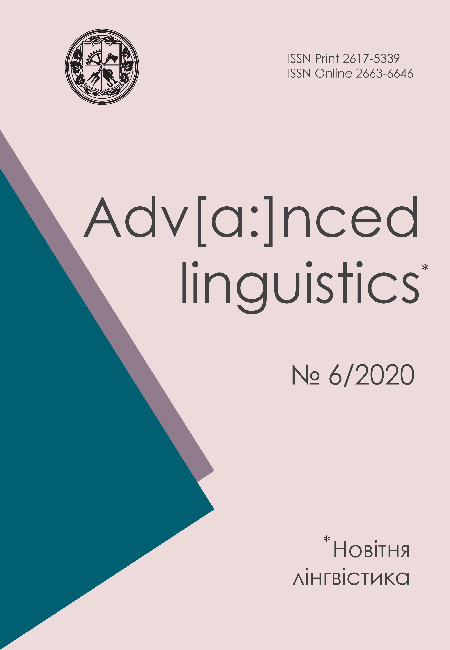LINGUOCULTURAL FEATURES OF IRISH SLANG AND THEIR PRESENTATION IN TRANSLATION
DOI:
https://doi.org/10.20535/2617-5339.2020.6.218504Ключові слова:
slang, Irish Republic, Linguistic cultural typesАнотація
The article presents the results of the linguocultural theory that is one of the most actively developing areas of linguistics. It is caused by the fact that modern linguistics contains a significant amount of material concerning cultural concepts and linguistic personality. The notion of linguistic and cultural type is considered a recognizable image of a particular culture’s representative, the totality of which is the culture of a society. The study is based on an analysis of the Irish linguistic and cultural types of the famous film “The Stag” - the debut film comedy directed by John Butler, as well as the novel of Patrick McCabe – “A Dead School”. At the heart of the story is a conflict between two characters, Raphael Bell and Melaki Dagen, who, in a worldview and generational way, reflect the clash of two different models of Ireland perception. The study found that the self-esteem of Irish drinkers and everything related to drinking is widely circulated in modern society. Therefore, the topic of drinking, and often even alcoholism, is perceived as specifically Irish.Particular attention was paid to the existence of slang in the Hiberno-English language. The survey called “Usage of Irish slang” was conducted and analyzed. The survey involved 76 respondents of all ages who replied to messages on the social network Facebook. It was also found that due to slang, a completely new form of communication emerged – netspeak, which combines both oral and written forms of communication. Based on the survey and experiment mentioned earlier, there were managed different types of slang: general slang and special slang.
##submission.downloads##
Опубліковано
Номер
Розділ
Ліцензія
Наше видання використовує положення про авторські права CREATIVE COMMONS для журналів відкритого доступу.
Автори, які публікуються у цьому журналі, погоджуються з наступними умовами:
1. Автори залишають за собою право на авторство своєї роботи та передають журналу право першої публікації цієї роботи на умовах ліцензії Creative Commons Attribution License, котра дозволяє іншим особам вільно розповсюджувати опубліковану роботу з обов'язковим посиланням на авторів оригінальної роботи та першу публікацію роботи у цьому журналі.
2. Автори мають право укладати самостійні додаткові угоди щодо неексклюзивного розповсюдження роботи у тому вигляді, в якому вона була опублікована цим журналом (наприклад, розміщувати роботу в електронному сховищі установи або публікувати у складі монографії), за умови збереження посилання на першу публікацію роботи у цьому журналі.

